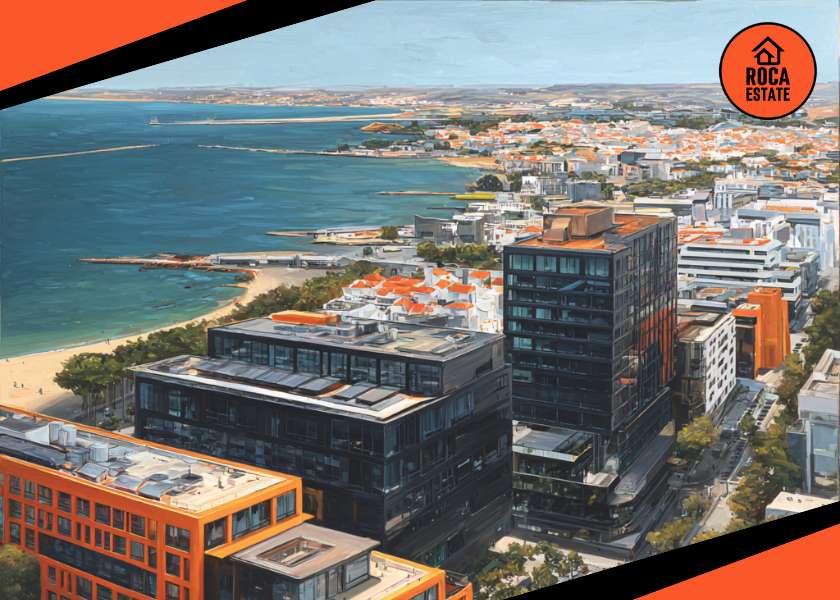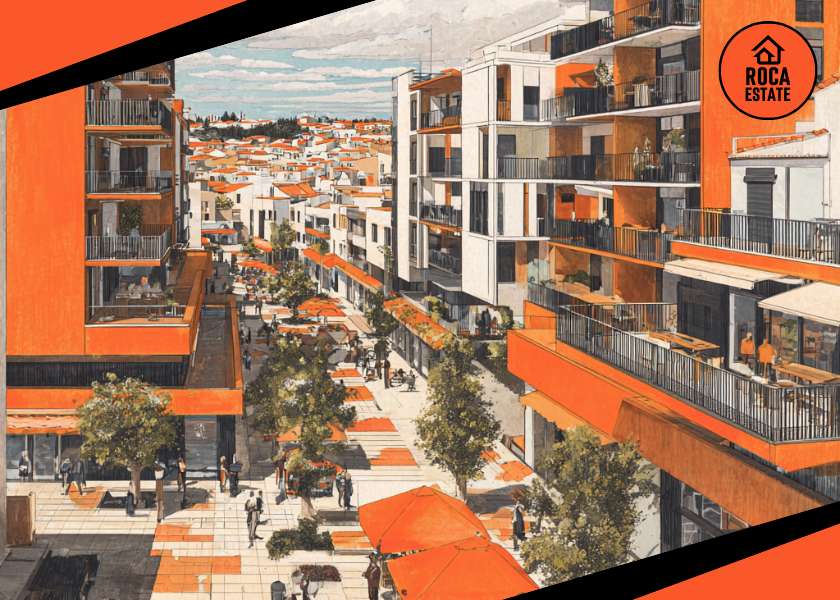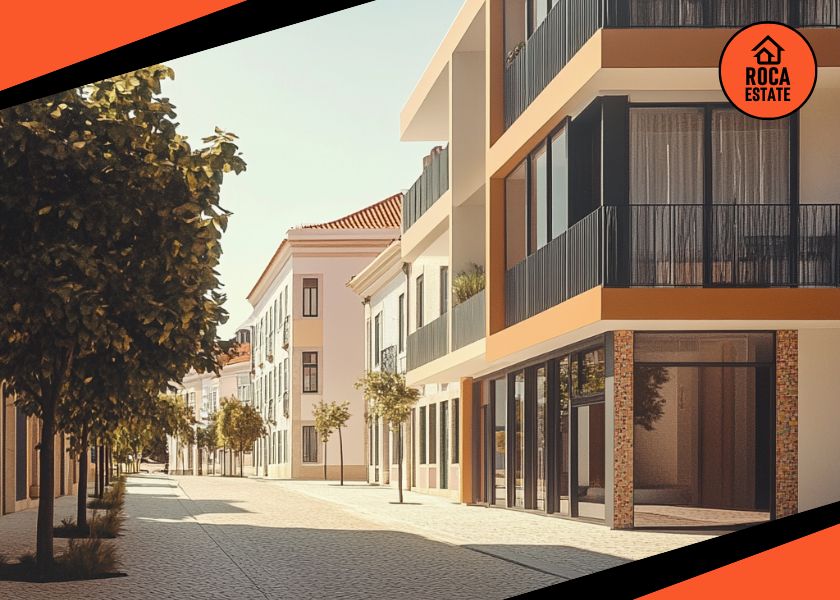Portugal’s residential real estate market delivered a strong performance in 2024, marked by accelerating price growth, a sharp increase in transaction volumes, and a clear pivot toward domestic demand. These shifts signal a more resilient but evolving investment landscape. While the underlying fundamentals remain strong, the dynamics between buyer profiles, regional preferences, and price movements reveal new strategic considerations for real estate investors, interested in the Portuguese market investments.
Market Overview: Growth Accelerates Across Key Indicators
According to the latest House Price Index data from Portugal’s National Statistics Institute (INE), 2024 was characterized by renewed momentum in both prices and sales volume:
- House Price Index (HPI): Up 9.1% year-on-year, a notable acceleration from 8.2% in 2023. The fourth quarter alone recorded 11.6% annual growth – the highest of the year.
- Transaction Volume: 156,325 dwellings were transacted in 2024, a 14.5% increase over the previous year.
- Transaction Value: Nominal transaction value rose by 20.8% to €33.8 billion, reflecting both rising prices and expanded sales activity.
This marks a clear departure from the more moderate pace seen in 2023, pointing to a broad-based recovery driven by both cyclical and structural demand factors.
Segment Performance: Existing Dwellings Lead Price and Volume Growth
In 2024, existing dwellings outperformed new dwellings on nearly every metric:
- Price Growth: Existing homes rose 9.7% versus 7.5% for new properties.
- Transaction Growth: Sales of existing homes increased 14.8%, while new dwelling transactions rose 13.4%.
These figures are especially relevant for investors focused on income-producing assets or value-add opportunities in the secondary market. The depth and liquidity of the existing homes segment also provide stronger exit options and pricing power.
Demand Dynamics: Domestic Buyers Dominate as Foreign Purchases Decline
One of the most notable shifts in 2024 was the increasing dominance of buyers with tax residence in Portugal, who accounted for 93.7% of total transactions. This marks a 2.5 percentage point increase over 2023 and the highest domestic share since 2020.
Meanwhile, foreign demand contracted:
- Total transactions by non-resident buyers: Down 5.9% year-on-year.
- EU buyers: Down 2.8%.
- Non-EU buyers: Down 8.9%.
This decline in international demand – especially in historically high-interest regions like the Algarve and Greater Lisbon – suggests that Portugal’s real estate growth is no longer as dependent on foreign capital inflows. For foreign investors, this points to a more competitive landscape where local buyers are increasingly price-setters.
Regional Performance: Growth Tilts North and Inland
Regional distribution of transactions and values shows both continuity and recalibration:
- North and Greater Lisbon together accounted for 49% of all transactions. North recorded the largest increase in regional share (+0.6 pp).
- Algarve, long a foreign investor favorite, saw its transaction value share drop by 2.0 pp to 10.9%.
- Regions like Centro and Setúbal Peninsula saw modest increases in activity, suggesting growing investor interest in less saturated submarkets.
For investors, this data supports a diversified regional approach. Areas showing early-stage growth with less reliance on foreign buyers may offer better long-term yield resilience.
Institutional vs. Household Investment: Diverging Patterns
Institutional players (including corporations and financial institutions) accounted for 13.9% of total dwelling purchases in 2024 – down from 14.5% the year prior. While their total acquisition volume rose 10.3%, this lagged behind household growth (+15.2%).
Other key observations:
- Average transaction value for institutions: €233,452.
- Average for households: €213,672.
This pricing differential reflects institutional focus on premium assets or high-barrier markets. However, the relatively slower growth among institutional transactions may signal a reassessment of yield expectations or heightened caution around macroeconomic risks.
Foreign Buyer Snapshot: Fewer Transactions, Still Paying a Premium
Despite fewer acquisitions, foreign buyers continue to spend more per transaction:
- EU buyers: €286,846 average.
- Non-EU buyers: €421,730 average.
- Domestic buyers: €207,230 average.
The United States and the United Kingdom stood out for high average transaction values (€429,823 and €431,172 respectively). However, overall foreign interest softened, and Algarve’s foreign buyer share in both volume and value declined significantly.
While foreign capital remains a critical component in specific submarkets, these trends suggest investors should reassess overreliance on international demand as a growth driver, particularly in tourist-heavy coastal regions.
Outlook: What Investors Should Watch in 2025
As Portugal enters 2025, investors should monitor several key variables that could materially impact market performance:
1. Monetary Policy Shifts
Should European Central Bank rates begin to ease, credit conditions could further stimulate domestic demand, particularly among first-time buyers. Conversely, persistently high rates may cap upward price momentum.
2. Regulatory Environment
While 2024 saw reduced Golden Visa uptake and adjustments to short-term rental regulations, any further tightening could dampen foreign investor appetite – especially in high-demand areas like Lisbon and Porto.
3. Supply Constraints
With existing dwellings dominating transactions and construction lagging in some regions, supply bottlenecks may continue to push prices higher in the short term. This raises both return potential and affordability concerns.
4. Shift in Investor Profile
Domestic buyers – both individual and institutional – are increasingly influential. Their growing share suggests a shift toward a more stable, end-user-driven market, with lower susceptibility to foreign capital flight.
Conclusion: Navigating a Reshaping Market
Portugal’s residential market has demonstrated clear resilience in 2024, with strong fundamentals driven by local demand and solid price performance. However, the moderation in foreign buying activity, coupled with regional shifts and institutional pullback, signals a market in transition.
For investors, the imperative is to adopt a strategic, data-informed approach:
- Focus on existing dwellings in liquid, upward-trending submarkets.
- Reassess risk exposure in areas reliant on foreign capital or tourism-driven yield models.
- Diversify into emerging regions showing rising transaction shares and local demand.
- Monitor for macro and policy signals that could materially shift investor sentiment.
As the market rebalances, opportunity remains – but will increasingly favor investors attuned to domestic trends, regional nuances, and policy risks.




































































































